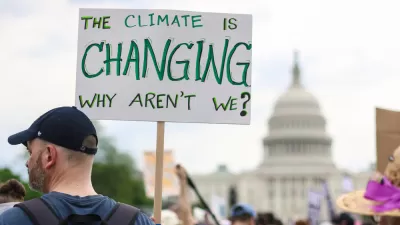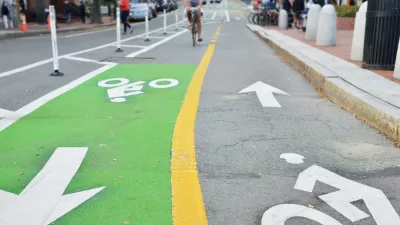McKay Jenkins looks at the challenges confronting Maryland as the state tries to reckon with the devastating consequences of the era of sprawl and prepare for an additional one million people over the next twenty five years.
With the state's natural and man-made systems stretched to their breaking point, Jenkins speaks with Rich Hall, Maryland's director of planning, who has the unenviable task of figuring out how to manage the need to accommodate 500,000 new homes in the next two and a half decades.
While a thoughtful new document called PlanMaryland lays out a sustainable growth vision for the state, already the fifth-most densely populated in the country, it has no legally binding language and poses a tough question for the area's residents and politicians, writes Jenkins: "What makes a state a good place to live, not just today but for a long time? Because when it comes right down to it, Maryland can grow like an oak, using its resources wisely and well, staying within its natural limits. Or it can grow like a cancer."
In a thorough piece, Jenkins looks at the key challenges the state is facing around such issues as housing ("how to induce people and businesses to move back to cities and towns"); protecting farms and forests ("From 1982 to 2007...state farmers sold some 500,000 acres of land-one-fifth of Maryland's total-to developers); and transportation ("The state's average commute time is now nearly thirty-two minutes, longer than both New York and New Jersey and one of the highest numbers in the country).
FULL STORY: The Era of Suburban Sprawl Has to End. So, Now What?

Planetizen Federal Action Tracker
A weekly monitor of how Trump’s orders and actions are impacting planners and planning in America.

Map: Where Senate Republicans Want to Sell Your Public Lands
For public land advocates, the Senate Republicans’ proposal to sell millions of acres of public land in the West is “the biggest fight of their careers.”

Restaurant Patios Were a Pandemic Win — Why Were They so Hard to Keep?
Social distancing requirements and changes in travel patterns prompted cities to pilot new uses for street and sidewalk space. Then it got complicated.

Platform Pilsner: Vancouver Transit Agency Releases... a Beer?
TransLink will receive a portion of every sale of the four-pack.

Toronto Weighs Cheaper Transit, Parking Hikes for Major Events
Special event rates would take effect during large festivals, sports games and concerts to ‘discourage driving, manage congestion and free up space for transit.”

Berlin to Consider Car-Free Zone Larger Than Manhattan
The area bound by the 22-mile Ringbahn would still allow 12 uses of a private automobile per year per person, and several other exemptions.
Urban Design for Planners 1: Software Tools
This six-course series explores essential urban design concepts using open source software and equips planners with the tools they need to participate fully in the urban design process.
Planning for Universal Design
Learn the tools for implementing Universal Design in planning regulations.
Heyer Gruel & Associates PA
JM Goldson LLC
Custer County Colorado
City of Camden Redevelopment Agency
City of Astoria
Transportation Research & Education Center (TREC) at Portland State University
Camden Redevelopment Agency
City of Claremont
Municipality of Princeton (NJ)




























